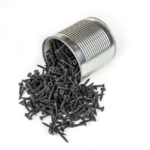Is Sheetrock the same as drywall? There’s an easy answer to the Sheetrock vs drywall question, along with a fascinating history.
Whether you’re a construction professional who’s been in the building game for years or someone looking to do their first home renovation, you’ve probably heard the terms “drywall” and “sheetrock”, but what’s the difference?
What’s the Difference Between Sheetrock and Drywall?
Sheetrock is a specific brand name for drywall. Much like “Goodyear” is a brand of tires. Sheetrock and drywall are two different words meaning almost the same thing.
Sheetrock is a brand of drywall produced by the United States Gypsum Company, or USG, and drywall is made by several companies around the world.
What’s the difference between drywall and Sheetrock? Drywall is the generic name of wallboard, and Sheetrock is a popular brand name.
What Is Drywall?
So, if Sheetrock and drywall are almost the same, what is drywall?
Drywall is a gypsum wallboard panel used for finishing interior walls in construction projects. Drywall is manufactured by turning gypsum rock into powdered gypsum, a naturally occurring mineral made from calcium sulfate, into gypsum plaster.
Plaster is then pressed between two thick sheets of paper. Depending on the type of drywall, the gypsum core can have additives like fiberglass mats.
Paper sheets hold the gypsum material together and make the panels more moisture-resistant or flame-retardant.
Who Invented Drywall?
To fully understand Sheetrock Vs drywall, we should go back to the beginning.
Augustine Sackett invented Sackett Board in 1894 by layering plaster inside four thick wool pieces of heavy paper.
Sackett Board is considered the first generation of drywall, the very beginning of the drywall industry. Thank you, Mr. Sackett!

The Godfather of Drywall, and prolific inventor, Mr. Augustine Sackett.
What is Sackett Board?
Augustine Sackett filed for a U.S. Patent on May 23, 1890, for Sackett Board, and the patent was issued on May 22, 1894, as “Inside-Wall Covering.”
Not only did Augustine Sackett invent drywall panels, but he also developed machines and equipment to manufacture his gypsum wallboard panels.
Augustine Sackett was inducted into the Inventors Hall of Fame in 2017 for his role in creating the gypsum drywall industry.
The Birth of Drywall
If Augustine Sackett invented gypsum panels in 1884, where did the term drywall come from?
Sackett Board changed the way buildings are finished. Before the re-manufactured Sackett Board was invented, plaster was applied to wood lath on interior walls.
The labor-intensive process required long dry times for the multiple coats of wet materials and plaster over the wood lath.
Using Sackett’s gypsum wallboard panels removed the lath and plaster process – no more waiting for the plaster walls to dry, the Sackett Board was already “DRY.” The term “Dry-Wall” was born.
What is Sheetrock?
United States Gypsum Corporation bought the Sackett Plaster Board Company in 1910.
Sheetrock is a drywall brand name created in 1917 and is a registered trademark of the U.S. Gypsum Company.
A few tweaks in the gypsum board formula allowed Sheetrock to retain it’s patent and trademark. Sheetrock vs Drywall? Sheetrock was born from the drywall term.
Easy to Install Building Materials
During World War II, there was a severe labor shortage. Easy to install, inexpensive building materials were needed.
After the war, the housing boom drove sheetrock and drywall demand through the roof as suburban sprawl began. Drywall was the obvious choice for homeowners and home builders.
Everyone wanted a house in the suburbs, and they were all covered with drywall. Quick to install the wallboard sheets, a few coats of mud, quick sanding, and you had paintable walls and ceilings. Ready to hang pictures!

Affordable and Easy to Use
Drywall and Sheetrock are both easy-to-use and relatively cheap products to finish on interior walls and ceilings. If you’re sitting inside a building right now, chances are you are surrounded by Sheetrock or drywall.
The gypsum wallboard panels attach to interior studs and fastened with screws or nails. Apply joint compound to the joints with taping tools, and you’re ready to sand and paint. It’s the preferred method of interior finishing for many different building types of construction around the world.
The Sheetrock Brand Name
Sheetrock’s popularity endures much like how the terms “Xerox,” “Kleenex,” “Band-Aid,” and “Velcro” endure.
All of the above are brand names and registered trademarks for products that have become commonplace. The brand association has dwarfed the actual name of the product.

Believe it or not, this is where the Sheetrock Vs drywall question originated. Gypsum is mined in 19 different states in the U.S. Oklahoma, Iowa, Nevada, and Texas mine the most gypsum.
The largest gypsum mine in the world? Milford, Nova Scotia, Canada. Over 21 billion square feet of drywall is shipped every year throughout the U.S. and Canada.
Types of Gypsum – Sheetrock Vs Drywall
There are various types of drywall with different thicknesses, sizes, and purposes.
Standard Drywall Thickness
One way to differentiate drywall is by thickness. Building codes require certain construction materials to meet fire resistance requirements.
Different thicknesses in drywall provide different fire resistance ratings.
Common drywall sheets range in thickness from ¼” to ⅝.”
¼ Inch Drywall
¼” drywall is the thinnest, lightest, and cheapest to purchase by weight. 1/4″ sheetrock thickness is not as typical and can be challenging to install because it tends to break easily.
¼” drywall is commonly used for re-finishing surfaces, placing over existing plaster, or for walls or ceilings with slight curves.

3/8 Inch Drywall
For a little extra durability than 1/4” drywall, 3/8” is often used for patching or laminating over existing finishes. It’s also a good choice for curved surfaces.
½ Inch Drywall
Half-inch drywall is what most contractors and builders would refer to as standard drywall thickness or regular drywall.
1/2″ drywall is used on interior walls in most single-family homes.
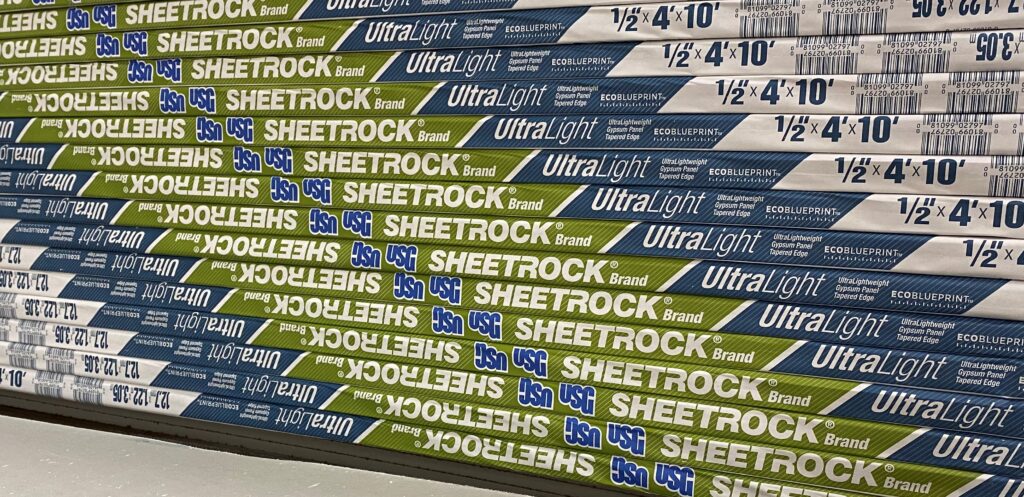
Chances are, in your locality, building codes will call for ½” drywall on residential walls, and 5/8” drywall on ceilings.
⅝ Inch Drywall
5/8″ inch thick drywall is typically used in fire-rated wall and ceiling assemblies. Fire-rated drywall, or Type-X drywall, isn’t always 5/8″ thick, but the most common application will be 5/8″.
In commercial construction, 5/8″ thick sheets of drywall is the standard thickness. In a residential building, the typical sheetrock thickness is 5/8″ for use on ceiling assemblies, fire-rated wall assemblies, and garages.
The extra thickness of Sheetrock also provides strength and is much more sag-resistant than 1/2″ drywall.
While fire-resistant drywall is ⅝” thick, not all ⅝” thick Sheetrock is fire-resistant. If your local municipality calls for fire-resistant drywall specifically, you’ll want to be sure the drywall is “Type-X.”
In townhomes, apartment buildings, or other multi-family structures, the shared walls between different units will sometimes need multiple layers of 5/8” sheetrock to improve fire resistance and dampen sound transmission.
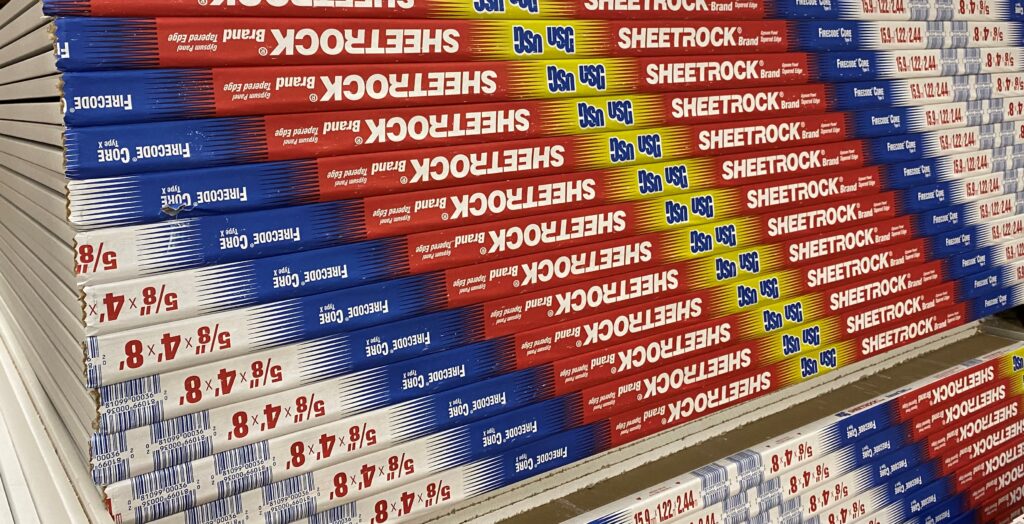
What Thickness Drywall to Use on a Ceiling?
The proper thickness of drywall to use on ceilings depends on the application.
As with most drywall and sheetrock installations, refer to the project-specific specifications and local building codes.
Certain fire-rated ceiling assemblies require one, two, three, or more layers of 5/8” Type X sheetrock.
Other ceiling assemblies without a fire rating might only need one layer of half-inch drywall.
And never forget your drywall lift when hanging ceilings. One of the most important inventions in the history of construction!
Different Types of Drywall
Different types of drywall have been developed for numerous uses. A few main types serve the majority of purposes in residential building projects and commercial construction.
- Fire-Resistant Drywall
- Greenboard & Moisture Resistant Drywall
- Ceiling Specific Drywall or “Sag” Resistant Drywall
- Acoustic and Soundproof Drywall
- Ballistic Drywall
- Lead-Lined Drywall
- Paperless Drywall
Fire-Resistant Drywall
Fire-resistant drywall tends to be ⅝” thick and has specific flame retardant properties. Type X is a commonly used fire-resistant drywall with special additives to slow fire spread.
It’s commonly called for in commercial buildings and separation walls in apartments and residential buildings.
Greenboard and Moisture Resistant Drywall
Greenboard is a moisture and mold-resistant type of drywall. It isn’t waterproof, but the green-tinted panels inhibit mold growth and help prevent water damage in high-humidity areas.
It’s used in basements, bathrooms, laundry rooms, and near plumbing pipes. Greenboard should not be used in wet areas or as a tile backer in shower areas, steam rooms, or saunas.
Another common moisture and mold-resistant drywall product is produced with fiberglass mats and sometimes referred to as DensShield, manufactured by Georgia Pacific.
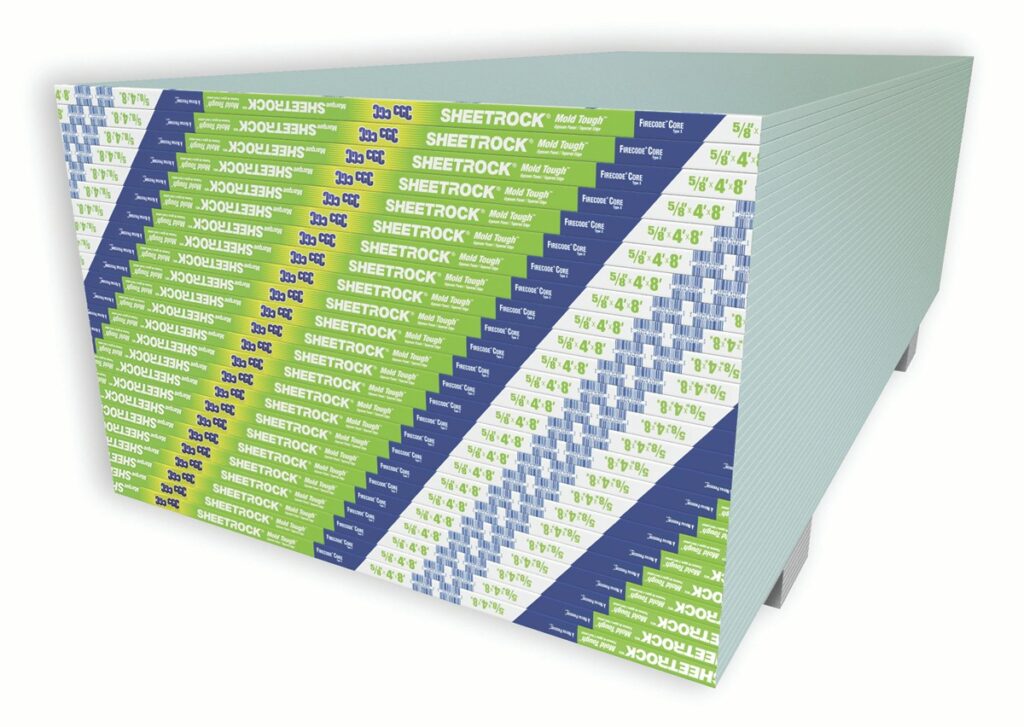
Fiberglass is used in a variety of gypsum board products. It provides extra structure and helps inhibit mold growth.
Cement board is also typically used in bathrooms and wet areas. Many architects specify cement board for use as a tile backer board.
It’s especially resistant to mold and mildew because it’s made with cement and fiberglass mesh rather than paper.
Ceiling-Specific Drywall
If you’re considering ceiling drywall or sag-resistant drywall for your next DIY project, remember it’s almost identical to other typical Sheetrock.
The only difference is its added structure to prevent it from sagging.
Acoustic Drywall
Acoustic gypsum board and soundproof drywall, sometimes called QuietRock, are used specifically for soundproofing.
These panels have high-density gypsum cores with damping polymers designed to absorb sound.
Sheetrock Vs Drywall Board Sizes
Over the last 100-plus years, drywall has become the standard building material for interior walls and ceilings because it’s easy to install. Drywall is sold in sheets ranging in size.
Common sizes for drywall are –
- 4′ x 8′
- 4′ x 10′
- 4′ x 12′
Sheets can be purchased in bulk, measured to fit the dimensions of your room, and cut, or snapped to size with minimal effort.
Drywall board sizes are standard around the United States, with only a few special options, such as 54″ wide drywall board for some residential projects.
Drywall Brands
Nowadays, several huge companies manufacture and produce drywall around the world.
A few of the largest brands are National Gypsum Company, US Gypsum Company (USG), known for their Sheetrock brand, CertainTeed, and American Gypsum.
The drywall industry constantly evolves because of mergers, acquisitions, and branding changes as new wallboard products develop.
Drywall manufacturers are continually figuring out how to be more efficient in a competitive business landscape.
Sheetrock Vs Drywall, and Mistakes to Avoid
Several common drywall mistakes should be avoided.
Using the Wrong Type of Drywall
Although most drywall looks similar, there are subtle but important differences, depending on its production.
Always be aware of the project specifications and local building codes.
If a building includes specific fire codes, it’s of the utmost importance to use the correct fire-resistant drywall rather than standard sheets.
Installing and Finishing Drywall
Now that the basics of different types of drywall are covered, you’ll be better equipped for determining which kind of Sheetrock you want to purchase for your construction project.
Once you’ve planned which type and thickness drywall you need, you can purchase from your local outlets like Home Depot, Lowe’s, or a drywall supply yard. Measure, cut to size, and install.
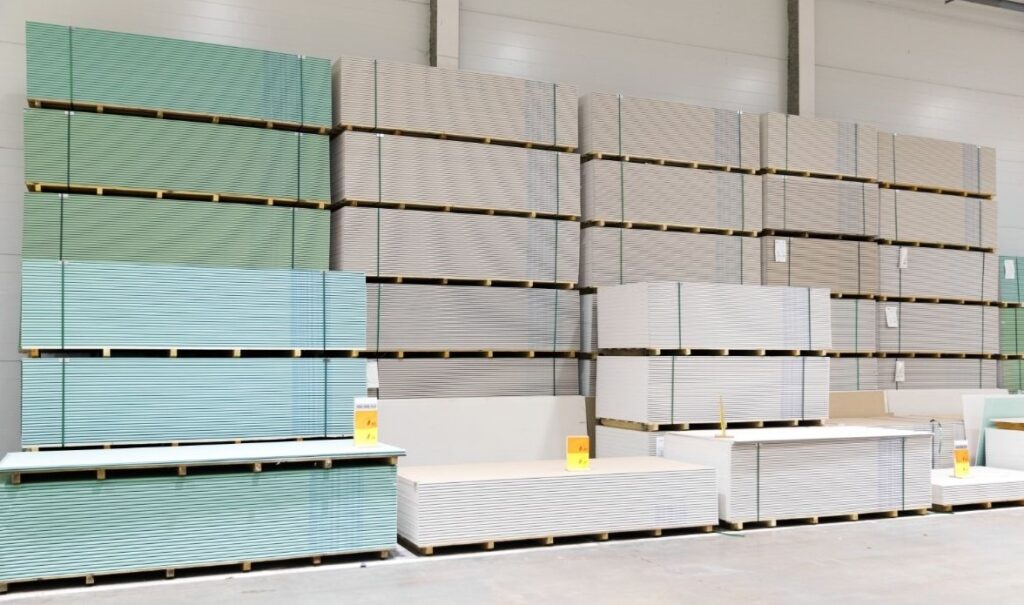
Sheetrock and drywall are readily available at your local home improvement store, but I’d recommend finding a drywall supply yard that will deliver and stock to your project.
The relatively small delivery charge is worth its weight in gold to have Sheetrock or drywall stocked directly in your building. You can thank me later for this valuable tip.
All that’s needed for installing drywall is to fasten the sheets to wooden or steel studs with drywall screws, and a drywall lift to move the panels into place.
A utility knife for cutting and joint compound to seal the seams between sheets doesn’t hurt to have either.
Once all your gypsum panels have been fixed to the walls and ceilings and sealed with joint compound, you’re free to finish your smooth wall with joint tape on the seams and whatever veneer plaster or paint you desire.
Sheetrock Vs Drywall?
From Sackett Board to the sheetrock vs drywall debate, you’ll find the answers at your nearest gypsum plant.
Little-Known Facts About Drywall and Gypsum
- In December of 1901, United States Gypsum Company (USG) was formed when 30 plaster and gypsum companies merged. The merger included 37 calcining and mining operations to form the first nationwide drywall manufacturer.
- USG holds over 1,000 trademarks and 2,400 patents.
- The word “gypsum’ is from the ancient Greek word “gypsos,” meaning “plaster.”
- If you remember chemistry class, gypsum is also called calcium sulfate dihydrate. The pure gypsum chemical formula is Ca(SO4) 2(H20).
- If gypsum is exposed to heat, it releases water. One of the many benefits to using gypsum for interior construction is the fire resistance.
- Gypsum crystals have been discovered in caves near Chihuahua, Mexico with free-standing gypsum crystals over 36 feet long.
- Gypsum is also used to make toothpaste, shampoo, brewing beer, sidewalks, ice cream, and chalk for chalkboards.


